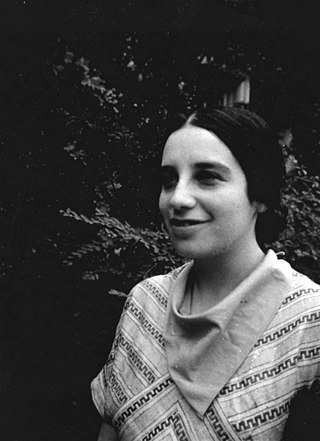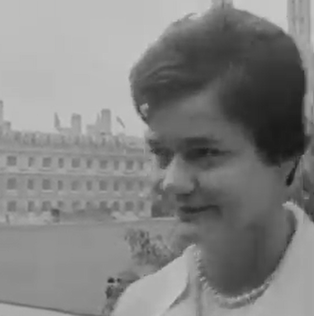
Owen Kay Garriott was an American electrical engineer and NASA astronaut, who spent 60 days aboard the Skylab space station in 1973 during the Skylab 3 mission, and 10 days aboard Spacelab-1 on a Space Shuttle mission in 1983.

TU Wien, also known as the Vienna University of Technology, is a public research university in Vienna, Austria.
A medical physicist is a health professional with specialist education and training in the concepts and techniques of applying physics in medicine and competent to practice independently in one or more of the subfields (specialties) of medical physics. A medical physicist plays a fundamental role in applying physics to medicine, but particularly in the diagnosis and treatment of cancer. The scientific and technological progress in medical physics has led to a variety of skills that must be integrated into the role of a medical physicist in order for them to perform their job. The "medical services" provided to patients undergoing diagnostic and therapeutic treatments must, therefore, be the result of different but complementary skills. In general, the medical physicist is responsible for all scientific and technical aspects of imaging, radiation treatment, and radiation safety. It is their occupational role to ensure that medical modalities offered to patients are met with the utmost quality assurance. It is the medical physicist that manage and supervise the efforts of dosimetrists, therapists and technologists in that capacity.
This article discusses women who have made an important contribution to the field of physics.
Evelyn L. Hu is the Tarr-Coyne Professor of Applied Physics and of Electrical Engineering at Harvard University. Hu has made major contributions to nanotechnology by designing and creating complex nanostructures. Her work has focused on nanoscale devices made from compound semiconductors and on novel devices made by integrating various materials, both organic and inorganic. She has also created nanophotonic structures that might someday facilitate quantum computing.
Betsy Ancker-Johnson was an American plasma physicist. She was known for her research into instabilities that can occur in plasmas in solids, and for her invention of a gigacycle range signal generator using semiconductor materials in magnetic and electric fields. She was the first woman Presidential appointee in the U.S. Department of Commerce. She is the fourth woman elected to the National Academy of Engineering.

Jenny Rosenthal Bramley was a Russian-born American physicist. She held numerous patents on electroluminescence and electro-optics, and was cited by the IEEE as being "well known for her innovative work in lasers." She was the second woman elected as a fellow of the IEEE.
Martha Ann Evans Sloan is an American electrical engineer. She taught engineering for many years at Michigan Technological University, and became the first female president of the IEEE. Her service to the profession has been honored by several society fellowships and awards.
Mary Jane Neville Odell was an American journalist, lecturer, and politician. She received multiple awards during her life, and was inducted into the Iowa Women's Hall of Fame in 1979. In 1980, Odell was appointed Iowa Secretary of State, a position that she held until 1987.

Elizabeth Laverick was a British engineer who became technical director of Elliott Automation Radar Systems. Laverick was the first female deputy secretary of the Institution of Electrical Engineers and president of the Women's Engineering Society. She was the first woman to receive a PhD in a scientific curriculum at Durham University, and was appointed an OBE in 1993.

Annie Nowlin Savery was an American suffragist and philanthropist based in Des Moines, Iowa. She is known as a pioneer feminist and activist for woman suffrage. She began taking part in the woman suffrage movement in the 1860s, and became a leader in the county and state, speaking widely and helping establish organizations to support it.
James Owen Perrine was an American physicist, college professor, developer of telephone technology, and coach of college football and college basketball.

Asta Hampe was a German electrical engineer, mechanical engineer, physicist, economist and statistician. According to The Woman Engineer, Hampe was the first German member of the Women's Engineering Society, which she joined in 1929.

Rachel Steinman Clarke was a Polish-born American violinist based in Chicago.

Donald Alfred Gurnett was an American physicist and professor at the University of Iowa who specialized in plasma physics.

Helen F. Johnston was an American physician and clubwoman, based in Iowa. She was president of the American Medical Women's Association from 1946 to 1947, and president of Altrusa International in 1928 and 1929.
Donald Arthur Piper is an American murderer and suspected serial killer convicted of killing two women in hotels around West Des Moines and Clive, Iowa in 1993 and 1997, but is considered a suspect in four other killings. For his confirmed crimes, Piper was convicted and sentenced to two life terms.

K. Renee Horton is an American physicist and Space Launch Systems Quality Engineer at NASA. She was the first black person to receive a PhD in material science and engineering with a concentration in physics at the University of Alabama. She is an advocate for black women in STEM fields and for disability rights.
Sandra Kay Johnson is a Japanese-born American electrical engineer, the first African-American woman to earn a doctorate in electrical engineering at Rice University, and the first black woman in the IBM Academy of Technology.










